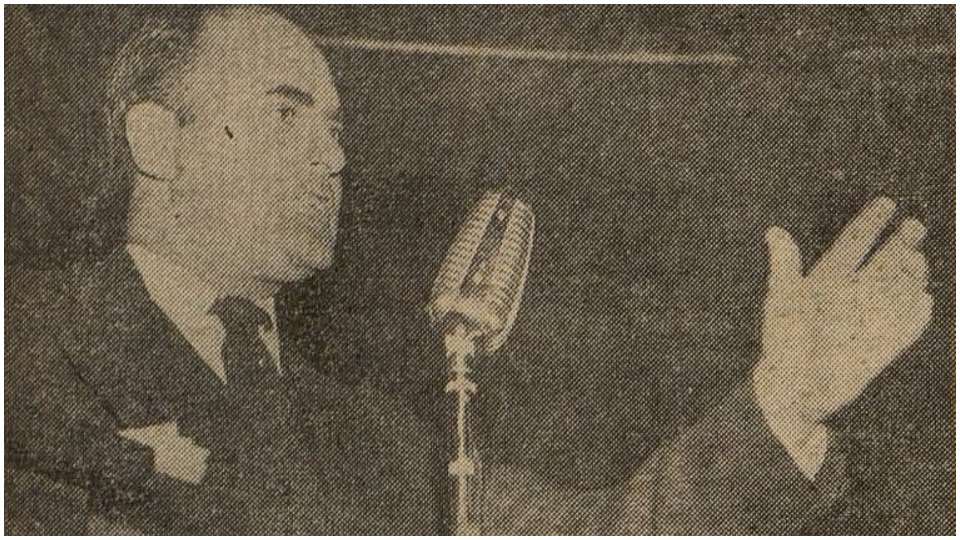
Sometime in the late 1980s, Baltimore Friends of the People’s Weekly World were organizing a fundraising banquet for the paper at the Steelworkers’ union hall in Dundalk. Ultimately, the banquet took place. Oakland Mayor Gus Newport came and spoke. Jim Jackson, George Meyers, and other leaders of the Communist Party were there. It was a great success despite a vicious redbaiting attack by the ultra-right.
The memory that always comes back to me of that struggle was the arrival of Ben Riskin to help us in the week before the banquet. He was sent down from New York by the CPUSA Labor Commission to help us repel this anti-Communist attack.
Riskin stayed with my wife Joyce and me in our Baltimore home. I will never forget Ben Riskin.
We were sipping coffee in our kitchen one morning. Riskin was glancing through the Baltimore Sun and his eye fell on a brief article about workers somewhere fighting to win “portal-to-portal” pay to cover the time it took them to get to their place of work and back at the end of their shift.
“Hey, listen to this,” Riskin said. He read aloud to Joyce and me the article reporting the workers’ victory in winning “portal to portal” pay.
“I was involved in a big struggle by iron miners in Alabama that won ‘portal-to-portal’ pay for thousands of underground miners, both coal miners and iron miners. They are still collecting that pay. It was a victory that has not been taken away.”
Riskin explained that he had been the research director for the International Union of Mine, Mill, and Smelter Workers during the 1930s and ’40s. The union, militant, left-led, was a principled foe of all forms of racism, any form of bigotry that the mine owners and steel corporations use to divide the working class.
2019 marks a century since the founding of the Communist Party USA. To commemorate the anniversary of the oldest socialist organization in the United States, People’s World has launched the article series: 100 Years of the Communist Party USA. Read the other articles published in the series and check out the guidelines about how to submit your own contribution.
Mine, Mill—the workers’ short-hand name for the union—had opened an organizing drive in 1933 to establish a local in the Birmingham region rich in deposits of coal and iron, perfect for creating what made Birmingham the “Pittsburgh of the South.”
Mine, Mill had won bargaining rights to represent 5,000 iron miners, a majority of them Black, in the Birmingham and Bessemer region. They were employees of the Tennessee Coal & Iron Corporation, a wholly owned subsidiary of United States Steel Corporation, later renamed the Fairfield Works of U.S. Steel. Other employers included Republic Steel and Woodward Iron Co.
The iron miners joined Mine, Mill in droves and soon were fighting to win fair wages and working conditions, including pay for the time it took the miners to get to the mine face—sometimes as much as an 80-minute daily round trip. The iron miners were majority African American.
“We were conscious of the fact that the United Mine Workers represented coal miners in Alabama, and we wanted to avoid any jurisdictional disputes with the UMW,” Riskin told us. “So we went to meet with UMW President John L. Lewis. I was in that delegation and Lewis told us, ‘You guys can take the lead on “portal-to-portal.” We’re too tied up with other issues.’ So we did. Mine, Mill launched a drive to win ‘portal-to-portal’ pay for miners under the Fair Labor Standards Act.”
Riskin traveled to Alabama where he conferred with rank and file leaders of the union working in the underground iron mines. “The most effective of all was Asbury Howard. He was an experienced iron miner, an eloquent speaker. I urged him to be one of our witnesses and he was.” Howard described in vivid detail the clouds of choking dust the miners were forced to travel through, either on foot or riding ore cars. Often, the mine ceiling was so low the miners were forced to lie flat on their backs on the ore cars as they trundled down the tracks.

LISTEN to an extended interview with Ben Riskin, a part of the Communist Party USA archives at Tamiment Library.
Ultimately, the federal government ruled that the time miners traveled from the mine entrance to the mine face and back was “compensable,” and must be considered part of the miners’ working hours.
I was stunned by Riskin’s mention of Asbury Howard. As the Washington correspondent of the Daily World, I had traveled down to Alabama in 1968 when Gov. George Wallace was campaigning for president. One of the first people I interviewed was Asbury Howard in his office in Bessemer. By then, Mine, Mill had merged with the United Steelworkers and Howard was the Civil Rights Director of the USW. He was awesome in his denunciation of Wallace as a racist union buster.
As for “portal-to-portal” pay, the corporations feared the spread of the demand to other industries.
The House Un-American Activities Committee (HUAC) launched a redbaiting attack charging that “portal-to-portal” pay was a Communist scheme. Rep. J. Parnell Thomas ranted, “As Chairman of the House Committee on Un-American Activities, I am in possession of certain information dealing with the original portal pay suit. The individual who is credited with concocting the idea of these suits and the lawyer who brought the original action both have histories of Communist affiliation.” Rep. Thomas was referring to Ben Riskin and CIO General Counsel Lee Pressman. Thomas was later convicted and served time in a federal penitentiary for extorting kickbacks from employees on his staff.
Congress passed both the Taft Hartley Act and the 1947 Portal-to-Portal Act, both designed to cripple organized labor by outlawing Communist Party members from union leadership and severely curbing “portal-to-portal” pay. The International Union of Mine, Mill, and Smelter Workers was one of the left-led unions destroyed by Cold War anti-communism.
And millions of workers across the nation are still waiting to be compensated for the time it takes them to get to and from their job site. Yet here was Ben Riskin in our kitchen planning the fight back against the redbaiters. He kept on until he died.










